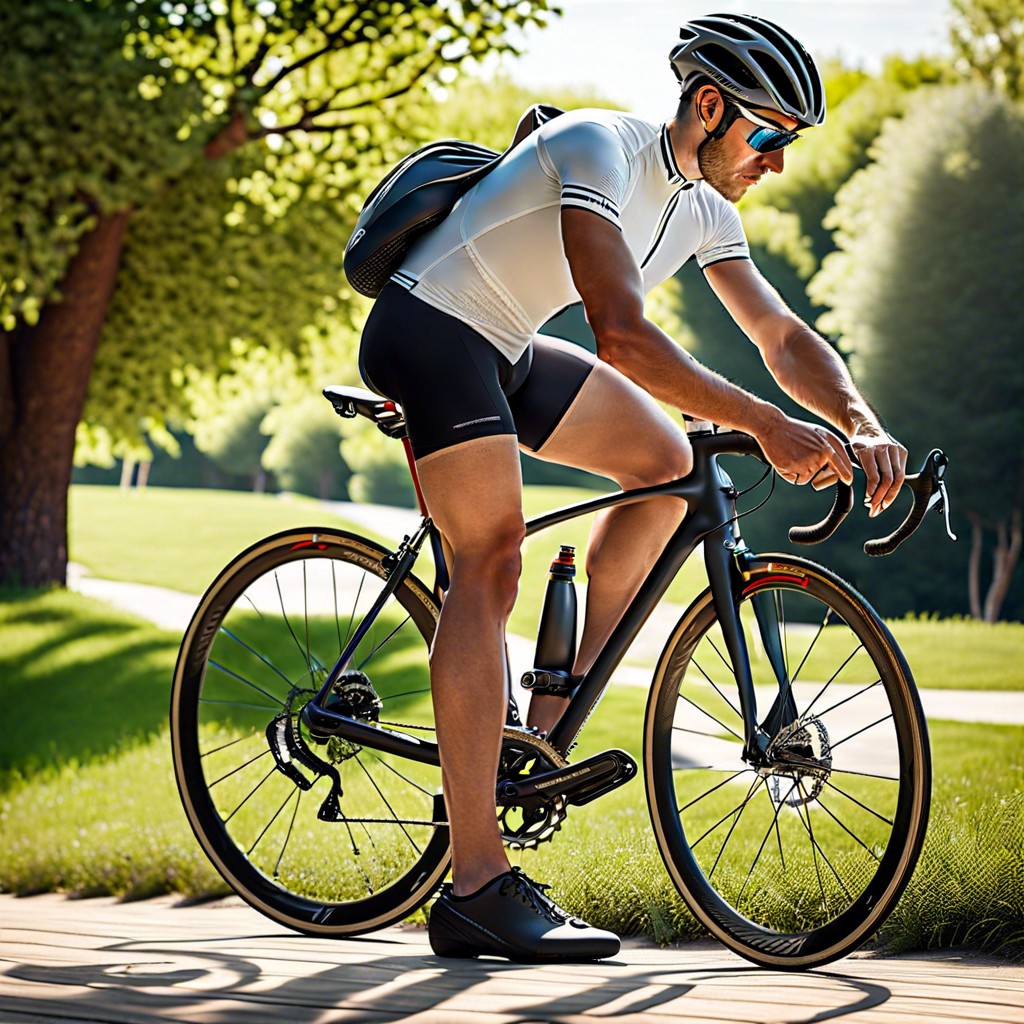Learn the optimal height for your bike seat to ensure comfort and efficiency during your rides.
Key takeaways:
- Proper saddle height improves comfort and pedaling efficiency
- Optimal leg extension minimizes strain and promotes joint health
- Use the LeMond Formula as a starting point for saddle height adjustment
- Assess knee bend, hip rocking, and foot position to evaluate saddle height
- Consider a professional bike fit for personalized adjustments and optimal comfort and performance.
Saddle Height Importance

A properly adjusted saddle height is pivotal for efficiency and comfort while cycling. It allows for the full range of motion in your legs, which translates to powerful pedaling with minimal wasted energy. Moreover, incorrect saddle height can lead to joint strain and injury, particularly in the knees. Riders may not only experience discomfort but also find their performance compromised.
Achieving the right saddle height helps to distribute your weight evenly between the saddle and handlebars. This balance minimizes pressure points and contributes to better bike handling, especially during long rides. Remember, the goal is to find a height where your feet can still comfortably reach the pedals at the bottom of the stroke without rocking your hips.
In summary, saddle height is a critical determinant of both comfort and performance on a bike. Striking the right balance can enhance your cycling experience, prevent injuries, and elevate your riding efficiency.
Optimal Leg Extension
Achieving optimal leg extension on a bike is pivotal for riding comfort and efficiency. When your leg is at the bottom of the pedal stroke, a slight bend should remain in the knee – typically recommended at around a 25 to 35-degree angle. This position minimizes the risk of overextension while ensuring powerful pedaling without sacrificing joint health.
A too-low saddle forces the knees to absorb more stress and can lead to rapid fatigue. Conversely, a too-high saddle may cause hip rocking, discomfort, and potential long-term injury. To check for correct leg extension, place your heel on the pedal at its lowest point. Your leg should be fully extended in this position without tilting the pelvis.
Fine-tuning for individual differences is key, as leg extension can be affected by foot length, pedal and shoe design, and personal comfort and biomechanics. Regular assessment of leg extension is encouraged, especially when changes are made to riding shoes or pedals. Adapting saddle height over time, according to changes in flexibility or riding style, is crucial for maintaining optimal leg extension.
LeMond Formula Application
The LeMond Formula, devised by former professional cyclist Greg LeMond, proposes a simple method to determine appropriate saddle height. Multiply your inseam length by 0.883; the result reflects the distance from the center of the bottom bracket to the top of the saddle along the seat tube. Use a tape measure for accuracy and adjust the seat post accordingly.
This measurement ensures a nearly fully extended leg at the bottom pedal stroke, permitting efficient power transfer and reducing the risk of knee injuries. Consider minor adjustments based on personal comfort or discrepancies in shoe sole thickness. Remember, the LeMond Formula is a starting point and may require fine-tuning to accommodate specific rider biomechanics.
Evaluating Saddle Height Correctness
To ascertain whether your saddle height is correctly set, observe these indicators:
- Knee Bend: At the bottom of the pedal stroke, your knee should have a slight bend, typically between 25-35 degrees. This angle prevents overextension and maintains optimal leg power.
- Hip Rocking: Excessive hip movement suggests a saddle that’s too high, causing unnecessary strain and inefficient pedaling. Saddles set too low will lead to cramped leg motion and reduced leverage.
- Proper Foot Position: Throughout the pedal stroke, the ball of your foot should align with the pedal spindle. This anatomical alignment maximizes force distribution and pedaling efficiency.
If you encounter discomfort or inefficiency while riding, consider making minor height adjustments to pinpoint your ideal saddle position. Remember, minor tweaks can make a significant impact on comfort and performance, so slight variations from the optimal range are permissible to accommodate personal anatomy and riding style.
Professional Bike Fit Recommendation
Seeking expert advice often resolves lingering issues and uncertainties about bike fit. A professional bike fit delves deeper than seat height, considering factors such as riding style, flexibility, and any physical limitations or injuries.
During the session, trained fitters use sophisticated tools and measurements, like pressure mapping and motion capture, to fine-tune your position on the bike. They ensure not just the correct height, but also the fore-aft position and tilt of the saddle, as well as handlebar reach and height, all of which contribute to overall comfort and efficiency.
Moreover, a professional bike fit is not a one-time affair. It’s advisable to have periodic assessments, as your body and riding style evolve. Remember, investing in a professional bike fitting is an investment in your riding comfort, enjoyment, and performance on the bike.